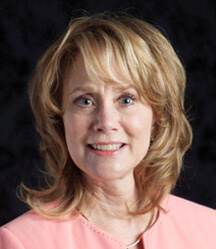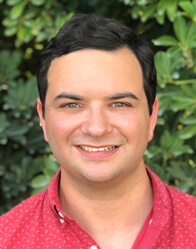Season 1 – Episode 48 – Conflict in the Classroom
Administrators and faculty members encounter conflicts regularly. However, many of them lack proper training in handling these unavoidable situations, leading to interventions that might worsen the conflict rather than resolving it. Classroom conflicts can span across different generations and learning approaches. The methods for addressing these conflicts within the classroom can vary depending on the specific situation and involve considerations for the individual student, faculty member, and institution.
Episode Transcript
Click to expand/collapse
Darren Gaddis: From CITI Program, I’m Darren Gaddis and this is On Campus. Today, conflict within the classroom, differences in conflict between online and in-person learning and how to mitigate conflict within the classroom. I spoke with Lavena Wilkin, the director of the PhD and graduate management programs at Sullivan University. As a reminder, this podcast is for educational purposes only. It is not intended to provide legal advice or guidance. You should consult with your organization’s attorneys if you have questions or concerns about relevant laws and regulations discussing this podcast. Additionally, the views expressing this podcast are solely those of the guests and do not represent the views of their employer. Hi, Lavena. Thank you for joining me today.
Lavena Wilkin: You’re welcome.
Darren Gaddis: To get us started today, what is your educational and professional background?
Lavena Wilkin: I spent the first 26 years of my career in the construction industry. I worked for a construction company for 23 years and I bought the company and owned it for three years. About that time, I was asked to teach as an adjunct faculty member for the university and really fell in love with teaching and that’s how I got into education. How I got into conflict management was as the female owner of a construction company and having a conflict style of avoidance, I realized that was not working for me, so I needed to find a better way. Someone introduced me to this field of conflict management and it just changed my world really, because I knew that I didn’t have to do things the way I’d always done them. I could do things differently and have a better outcome. So I ended up at Nova Southeastern University getting my PhD in conflict analysis and resolution.
Darren Gaddis: With this information in mind and thinking about your background in conflict management, what is a conflict within a classroom and why do conflicts occur within the classroom?
Lavena Wilkin: Conflicts can occur in the classroom between students and faculty or between or among students themselves. The conflict is really a very naturally occurring part of life. We all have conflict. It’s how we grow and it’s how we expand our thinking and our knowledge. It’s when we don’t manage those conflicts productively that they spiral out of control and can really have that negative outcome. Conflict is a manifestation of discontent with either an interaction or a process and part of that is because we all have different experiences, we have different backgrounds, we have different expectations, and when those differences clash, that’s when conflicts can occur.
Darren Gaddis: What are some examples of conflicts which can occur within a classroom, and have you seen a rise in conflicts on college campuses in recent years?
Lavena Wilkin: It’s interesting when I started to think about this, yes, I have seen a rise in conflicts mostly between student and faculty members over the years. It’s interesting just in the last few weeks I have mediated conflicts between faculty members and students, and some of those are over grade disputes. Students today seem to be much more vocal and many of them have an expectation that a perfect 100% score is the only acceptable grade. Even the ones that I’ve mediated, the students had less than a 5% deduction on an assignment that would not have impacted their overall grade at all. I think that in part it’s some expectation of “I have to be perfect. I have to get the perfect score for myself. I have to prove to myself, I have to prove to my family,” so I think that is part of it.
When this happens, from my perspective and what I’ve seen with my students and my faculty is that both of them, the student and the faculty member believe that they are being disrespected in some way. It’s a relatively new experience for faculty to be so frequently challenged by students on their grading systems. I don’t know, it’s partly maybe because this is their generational differences, but it could also be in some ways a byproduct of the pandemic when so many students were forced to learn in a new way. They weren’t in the classroom face-to-face, having those one-on-one real-time interactions with their faculty member and their fellow students and they were forced online.
There’s the flip side of that. I think that there are many less vocal students who won’t engage in that conversation with the professor. They avoid that conflict, and so they simply quietly leave the university rather than risk a conversation with the professor. I think campus-wide also, there’s a more diverse student population and any time there’s diversity, it really is important to expand our minds, expand our experiences, but it can also be a cause of conflict. Again, those generational differences, there are more adults taking classes today and students come from different ethnic backgrounds or maybe part of the LGBTQ community. In part what we really all want is to be respected and when there is a lack of respect or a perceived lack of respect, those conflicts can escalate.
Darren Gaddis: With this information, what are some strategies for faculty members to deescalate conflict within the classroom?
Lavena Wilkin: Although in conflict management we say it far too often, but we’re obviously not doing it because the conflicts are still there. But I truly believe that one of the most important strategies we can use is to listen to each other. So many times it’s a one way communication. Somebody is speaking and the other person, the person is just waiting for their turn to talk. They’re not really listening. Listening goes back to that respect. When I listen to you, I’m showing you respect, and it’s a two-way street. It’s a two-way street for the faculty member to listen to the student and for the student to listen to the faculty members. Don’t make the mistake of assuming that I’m right and you’re wrong. That’s really that us versus them mentality. We have meanings and perceptions and even our responses to conflict situations are created by our own individual social realities and our experiences.
Most of us have a go-to conflict style. Basically it’s fight or flight, and oftentimes people react either cooperatively or competitively depending on the lens through which they see the world. That’s why it’s just so incredibly important to take the time and to listen and to understand others’ perspectives. When we do listen, we really open up our hearts and we might be able to generate new ideas about how to resolve this conflict. We may have the perception as a faculty member that the student is just lazy or they have higher expectations or that they’re not capable of doing something, but when we really listen to them and understand what’s going on in their lives, there is so much that all of our students are dealing with right now. So it’s so incredibly important to listen and to listen to understand, not just wait for our turn to talk.
I think it’s also really important for us as faculty members to create a psychologically safe place for students to share their thoughts and ideas, and that’s going to be up to us how we do that. But students need to feel as though they can come to us and they can talk to us and that we will listen. We may not always agree with them, but we will respect their right to have a conversation with us. We can do that really by practicing mindfulness and being aware of our own triggers. In one of the mediations that I did that I mentioned earlier between a student and a faculty member had been here at the university for a really long time and was a first term student. So really that student was trying to understand, and the faculty member is not necessarily a huggy-feely kind of person and so the student is that sort of person.
Right there, they had a clash because they were coming at it from different personalities. The faculty member felt that the student was not respecting him. The student felt like she couldn’t get an answer and she couldn’t understand why she wasn’t getting an answer, why it was so brusque. When I was doing that mediation, the student said something and the faculty member stood up and said, “I’m done” and walked out of the room. It was a trigger for that person that something the student said really triggered an emotion. We were able to come back to the room. We were able to understand that emotion. We were able to diffuse that. But it’s just so important to be mindful of our own emotions and our own triggers and figuring out what’s happening and why it’s happening.
I truly believe when we can understand the student’s motivations and the student can understand the faculty member’s motivation, we have a much better opportunity to create resolutions to any conflicts that occur. Like I said, students today are just dealing with a lot, so it’s so important for us to be fully present in the moment, and that allows us to be more compassionate to the students and to the situations that they are dealing with. We tend to think that emotions are maybe a negative or have no place in the classroom, but in reality, we are emotional beings as humans, and they are a part of conflict management. If we didn’t have an emotional tie to something, there wouldn’t be a conflict because we wouldn’t care. It’s those emotions that can escalate conflicts if we don’t diffuse them.
We used to have a university leader here who said that the venom needed to be drained. In other words, the people who are experiencing the emotions need to talk about them. He wasn’t talking about emotions gone wild, not yelling and screaming and that sort of thing. But his analogy was that if you’re bitten by a snake, it’s not necessarily the bite that will kill you, but it’s the venom. If it isn’t drained, it builds up inside of you. That will kill you. So the thing that escalates the conflicts is when we don’t express that emotion, if we don’t identify that emotion. A lot of it is really a result of fear. When a student is angry or a faculty member is angry or administrator is angry, it’s important to find out where that comes from. What is the motivation for that? What are they afraid of? Once we can figure that out, once we get to that fear, then we are more likely to be able to resolve the conflict in a more productive way.
Darren Gaddis: Knowing this information, are the strategies for deescalating conflict in the classroom different for online courses versus in-person courses?
Lavena Wilkin: I don’t necessarily think the strategies are different. I think that it’s for any conflict situation that you’re in, it is incredibly important to understand and clarify the perspectives and the perceptions of everybody involved, and you do that by listening. I think it’s also important to appreciate diversity, that you don’t just say, “Well, that person’s old” or “That person’s young”, or that person is this or that, and we take people out of the boxes we put them in. I think that clarifying perspectives, appreciating the diverse ideas and really listening, empathetically listening to them, working together to come up with resolutions, so collaborative problem solving, and then practicing that emotional intelligence, those are strategies that I believe work for any situation, any conflict situation that we’re in.
However, it is different online. One of the things that we did during the pandemic is we took students out of that face-to-face classroom and we put them all of a sudden, whether they wanted it or not, into an online classroom where they no longer had that one-on-one. So understanding that and understanding that students learn differently, understanding that the way I may be very independent and be able to go into an online class and learn, but another student might not be able to do that, and understanding those differences in learning styles will be important. It also might require us to do online office hours via Teams or Zoom, and they maybe not require them because it’s an online class and we say that it is asynchronous and we can’t require necessarily a synchronous component. But if we offer that to them, offer those online office hours or offer an online lesson, if there’s a particular area where someone is struggling, maybe offer online learning for them.
One of the things that I do, I teach a qualitative research course, and in that course they have to complete an institutional review board application to do research, and that is a struggle for students. What I do with them is I schedule a time in the evening when most people are available, and I pull up the application on my screen and I go through it with them section by section by section. If there is an area in an online class that students are struggling with, maybe offering them that synchronous opportunity to learn in that way. Another thing that I do is really a small thing, but I get so much positive feedback. I call it my Friday check-in, and I just sit down at my computer, turn on Panopto, and I record a video.
In that video, I might share some information. If somebody in office hours has had a question, I think, “Well, maybe the rest of the students have that question as well”, so I’ll clarify that. Sometimes I just offer words of encouragement to students. But I think the main thing in that little video that I create, and it’s sometimes two to five minutes, no longer than that, is that they see my face. They hear my voice, they know I care about them. They know I care about their success, and it’s just really one way that we can connect to our students in an online environment.
Darren Gaddis: What else should we know about conflict management in the classroom?
Lavena Wilkin: I think that just to be aware of conflict happens. It’s natural. We’re all different. We come to the classroom with different expectations. We come to the classroom with different experiences and different perspectives. One of the things I tell my students all the time is don’t be concerned about the grade, be concerned about the learning. I think that just being aware of what’s going on, being mindful, listening, clarifying those perceptions, understanding that my way is not the only way, that there might be multiple ways to get there and to being open-minded enough to listen. Again, I might not change. I might still be doing it the same way because that’s the correct way or the best way, but it’s being open and allowing these students to know that we listen and know that we care.
Darren Gaddis: Lavena, thank you for joining me today.
Lavena Wilkin: Thank you. Thank you for the opportunity.
Darren Gaddis: Be sure to follow, like and subscribe to On Campus with CITI Program to stay in the know. If you enjoyed this podcast, you may also be interested in other podcasts from CITI Program, including On Research and On Tech Ethics. You can listen to all of our podcasts on Apple Podcast, Spotify, and other streaming services. I also invite you to review our content offerings regularly as we are continually adding new courses, subscriptions, and webinars that may be of interest to you, like CITI Program’s Conflict Management course.
How to Listen and Subscribe to the Podcast
You can find On Campus with CITI Program available from several of the most popular podcast services. Subscribe on your favorite platform to receive updates when episodes are newly released. You can also subscribe to this podcast, by pasting “https://feeds.buzzsprout.com/1896915.rss” into your your podcast apps.
Recent Episodes
- Episode 47: Critical Infrastructure and College Campuses
- Episode 46: Biden-Harris Title IX Proposed Rule Change
- Episode 45: Developmental Educations Reforms
- Episode 44: LGBTQIA+ Individuals in Higher Education
Meet the Guest
LaVena Wilkin, PhD – Sullivan University
Dr. LaVena Wilkin has facilitated hundreds of workshops based on her P.E.A.C.E. © Model of Conflict Management. Her co-edited books are From Discord to Harmony: Making Your Workplace Hum and Handbook of Organizational Conflict Management. Her next book, Workplace Bullying: Moving From Victim to Survivor, will be available in 2024.
Meet the Host
Darren Gaddis, Host, On Campus Podcast – CITI Program
He is the host of the CITI Program’s higher education podcast. Mr. Gaddis received his BA from University of North Florida, MA from The George Washington University, and is currently a doctoral student at Florida State University.












